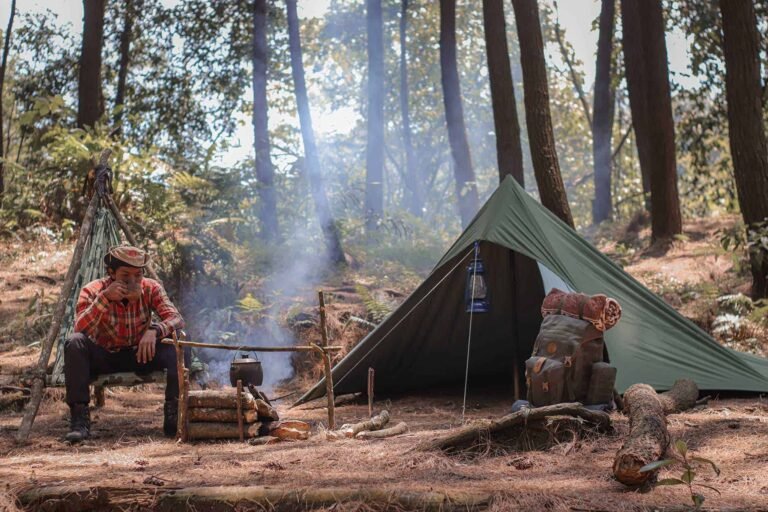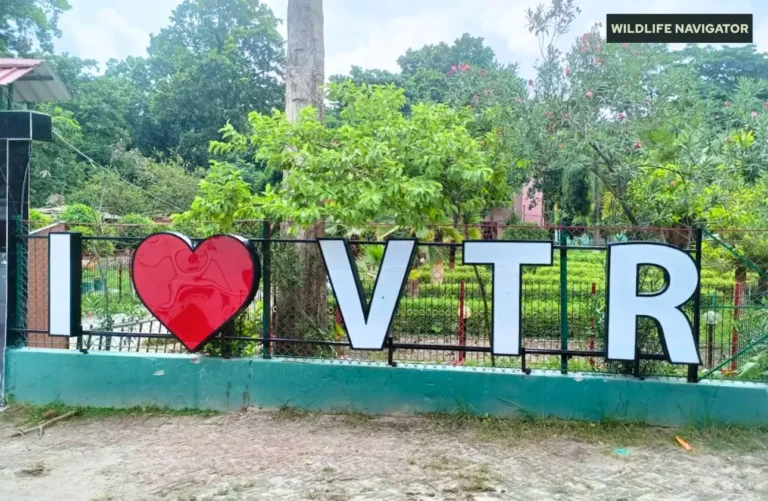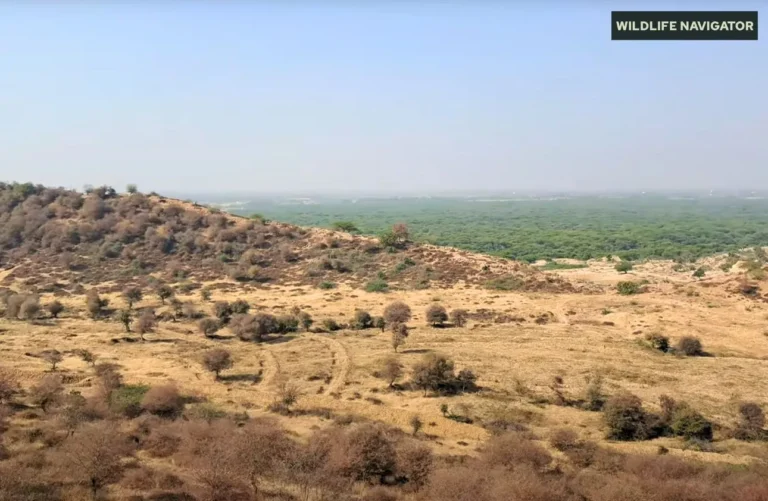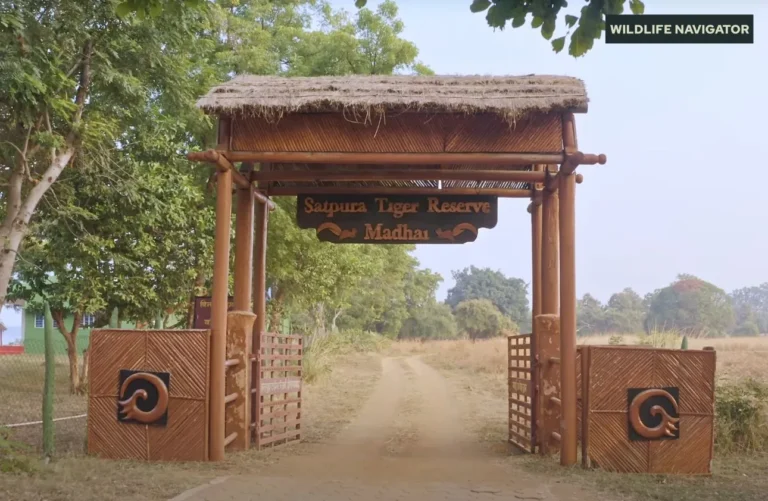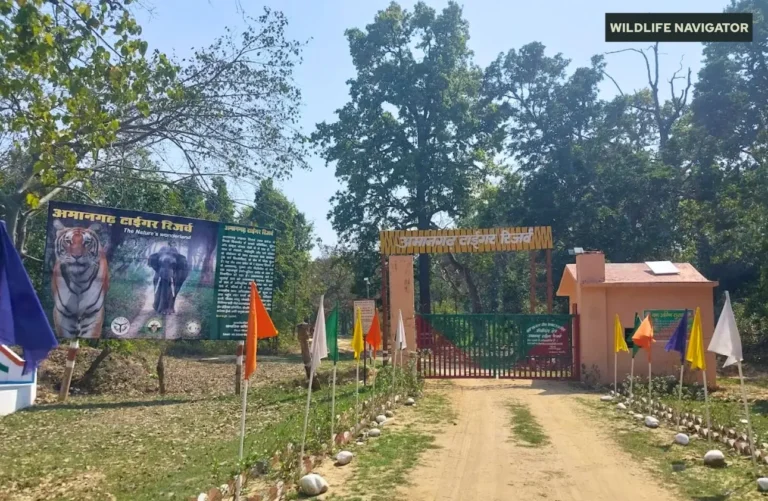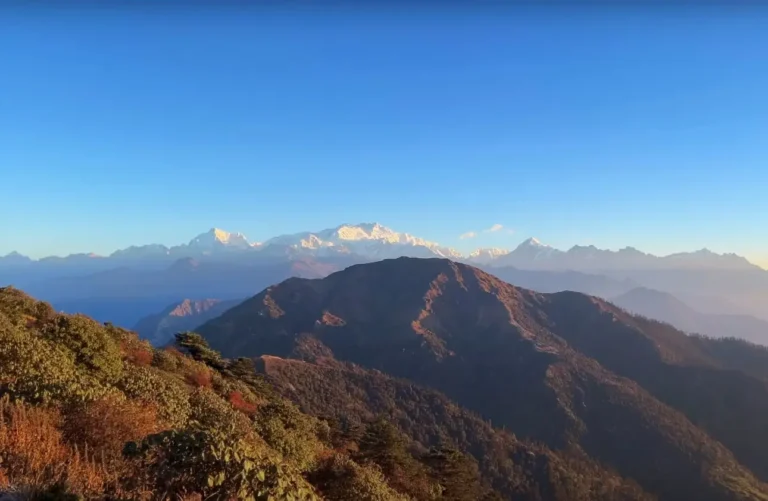Buxa Tiger Reserve: A Hidden Gem of Wildlife in West Bengal
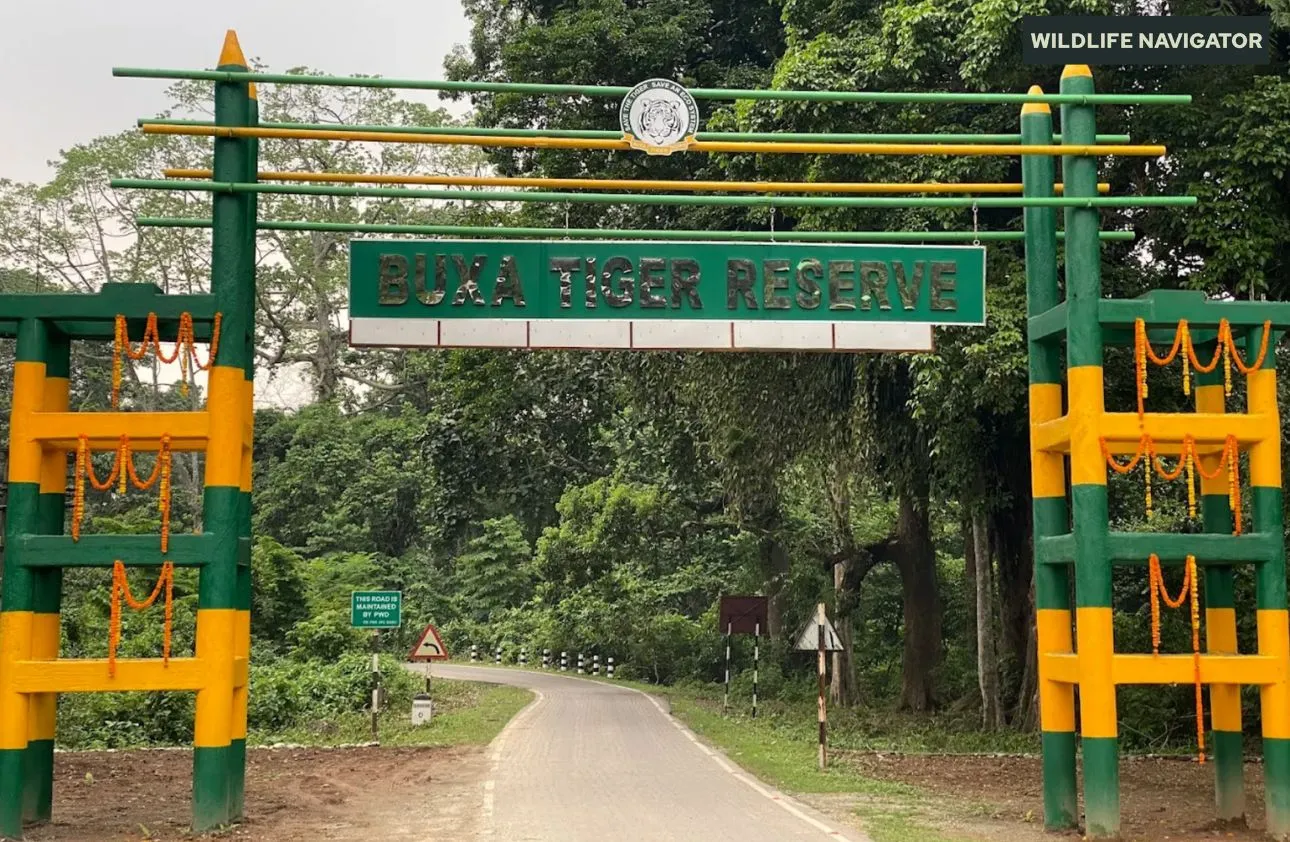
Buxa Tiger Reserve, located in the northern part of West Bengal near the Bhutan border, is one of India’s most ecologically significant tiger reserves. Established under Project Tiger, the reserve spans dense forests, riverine landscapes, and rolling hills, offering a sanctuary for Bengal tigers and numerous other wildlife species.
Beyond its importance for tiger conservation, Buxa is also a treasure trove of biodiversity, with a rich variety of flora and fauna, some of which are endemic to the region. The reserve’s forests provide a critical habitat not only for predators like tigers and leopards but also for herbivores, birds, and reptiles, creating a balanced ecosystem.
Buxa Tiger Reserve is more than just a wildlife haven; it is also culturally and historically significant. The area encompasses the famous Buxa Fort, a site steeped in history and linked to local legends and colonial times. For travellers and nature enthusiasts, Buxa offers an offbeat experience compared to more crowded tiger reserves in India, combining wildlife spotting with trekking, birdwatching, and a glimpse into the lives of local communities.
1. History and Establishment
Buxa Tiger Reserve has a rich history that blends both natural and cultural heritage. Originally, the area was designated as a wildlife sanctuary in 1983 and later elevated to a tiger reserve under Project Tiger, India’s ambitious initiative to protect its iconic Bengal tiger. This upgrade recognised the ecological importance of Buxa’s forests and its potential as a core habitat for tigers and other endangered species.
Historically, Buxa is also known for the Buxa Fort, which sits atop a hill overlooking the surrounding forests. The fort has witnessed multiple chapters of history—from its role in the Ahom and Bhutanese conflicts to its use as a detention center during the British colonial era. Today, it serves as a reminder of the area’s cultural and strategic significance while adding a historical layer to wildlife tourism in the reserve.
The reserve was established not just for tiger conservation but to protect the entire ecosystem, including its unique grasslands, rivers, and dense forest cover. Over the years, conservationists have implemented measures to curb poaching, reduce habitat fragmentation, and involve local communities in sustainable practices, making Buxa a successful example of integrated conservation.
Key Highlights:
- Declared a wildlife sanctuary in 1983, it was later upgraded to a tiger reserve.
- An integral part of India’s Project Tiger initiative.
- Buxa Fort: a historical and cultural landmark.
- Conservation focus extends beyond tigers to the whole ecosystem.
- Active involvement of local communities in preservation efforts.
2. Geography and Climate
Buxa Tiger Reserve is located in the northern part of West Bengal, spread across the Alipurduar and Jalpaiguri districts. Its proximity to the Bhutan border gives it a unique ecological and geographical character, making it part of the Eastern Himalayan biodiversity hotspot.
2.1 Terrain and Landscape
The reserve features a diverse terrain that supports a wide variety of flora and fauna:
- Dense forests: Tropical and subtropical forests dominate the region.
- Grasslands: Open meadows provide grazing grounds for herbivores.
- River valleys: The Torsha and Buxa rivers flow through the reserve, supporting aquatic life.
- Hills and cliffs: The undulating hills and rocky escarpments create natural corridors for wildlife movement.
This variation in terrain contributes to the reserve’s biodiversity, allowing tigers, leopards, elephants, and numerous smaller species to thrive in distinct microhabitats.
2.2 Climate
Buxa experiences a subtropical climate, characterised by:
- Monsoon season (June to September): Heavy rainfall nourishes the forests and replenishes rivers.
- Winter (November to February): Cool and dry, making it ideal for wildlife spotting.
- Summer (March to May): Warm temperatures, with dense foliage providing shade and cover for animals.
The combination of varied terrain and favourable climate makes Buxa Tiger Reserve a year-round haven for biodiversity. Seasonal variations also affect animal behaviour, making each visit a unique wildlife experience.
3. Flora of Buxa Tiger Reserve
Buxa Tiger Reserve is home to lush forests and diverse vegetation, which form the backbone of its rich ecosystem. The reserve’s flora is a mix of tropical and subtropical species, providing food and shelter for a variety of wildlife.
3.1 Forest Types
- Tropical Moist Deciduous Forests: Dominated by Sal, Teak, and other hardwood species.
- Subtropical Forests: Comprising Chir Pine, Oaks, and a variety of shrubs.
- Grasslands and Riverine Vegetation: Open meadows and riverbanks with tall grasses, reeds, and aquatic plants.
3.2 Notable Trees and Plants
- Sal (Shorea robusta) – Forms dense canopy in large areas.
- Teak (Tectona grandis) – Valuable timber species found in patches.
- Bamboo species – Provides food and cover for many herbivores.
- Chir Pine (Pinus roxburghii) – Common in higher altitudes.
- Medicinal Plants – Several endemic species used in local traditional medicine.
3.3 Seasonal and Endemic Flora
- During monsoons, wildflowers bloom extensively, enriching the forest floor.
- Certain plant species are endemic to the Eastern Himalayan region, making Buxa a unique biodiversity hotspot.
The diverse flora of Buxa not only supports herbivores like deer and elephants but also maintains a healthy prey base for predators like tigers and leopards, sustaining the ecological balance of the reserve.
4. Fauna of Buxa Tiger Reserve
Buxa Tiger Reserve is a wildlife haven, hosting a wide variety of mammals, birds, reptiles, and amphibians. Its diverse habitats—from dense forests to river valleys—support species across all trophic levels, making it an important conservation area.
4.1 Tigers and Other Predators
- Bengal Tiger: The star attraction, critical for maintaining ecological balance.
- Leopard: Highly adaptable, often spotted in forested and hilly areas.
- Jackal and Jungle Cat: Smaller predators that thrive alongside larger carnivores.
4.2 Herbivores and Prey Species
- Asian Elephant: Roams the forests and river valleys in herds.
- Gaur (Indian Bison): Large herbivore grazing in grasslands.
- Sambar Deer, Barking Deer, and Hog Deer: Common prey for tigers and leopards.
- Wild Boar: Widespread throughout the reserve.
4.3 Birdlife
Buxa is a birdwatcher’s paradise, home to both resident and migratory species:
- Hornbills and eagles.
- Kingfishers and wagtails along rivers.
- Seasonal migratory birds, especially during winter months.
4.4 Reptiles and Amphibians
- Snakes: King cobra, rat snakes, and vipers.
- Turtles and freshwater species in rivers.
- Frogs and toads, especially during the monsoon.
The rich fauna of Buxa Tiger Reserve not only attracts wildlife enthusiasts but also plays a vital role in maintaining the ecological integrity of this forested landscape, making it one of West Bengal’s most important wildlife conservation sites.
5. Conservation Efforts
Buxa Tiger Reserve is part of India’s Project Tiger, focusing on protecting Bengal tigers and preserving its rich biodiversity. Key efforts include:
- Anti-poaching measures: Regular patrolling and monitoring to prevent illegal hunting.
- Habitat restoration: Reforestation and protection of grasslands and riverine areas.
- Community involvement: Educating and engaging local communities in conservation.
- Research and monitoring: Tracking wildlife populations and studying ecological patterns to inform management.
These initiatives help maintain a balanced ecosystem, safeguard endangered species, and ensure Buxa remains a thriving habitat for wildlife.
6. Best Time to Visit Buxa Tiger Reserve
The ideal time to visit Buxa Tiger Reserve is from October to May, when weather conditions are most favourable for wildlife viewing and outdoor activities.
6.1 Winter (November to February)
- Cool and comfortable temperatures make early morning and evening safaris pleasant.
- Wildlife is more active during daylight hours, increasing chances of spotting tigers, elephants, leopards, and deer.
- Clear skies offer excellent visibility for birdwatching and photography.
6.2 Early Summer (March to May)
- Temperatures are moderate before the monsoon arrives.
- Vegetation begins to dry slightly, making animal movement easier to observe.
- Ideal time for trekking, nature walks, and exploring forest trails.
6.3 Monsoon Season (June to September)
- Heavy rainfall can restrict safari access and trekking routes.
- Rivers and low-lying areas may become flooded, limiting exploration.
- Dense foliage can make wildlife sightings more challenging.
By planning a visit during winter or early summer, tourists can enjoy comfortable weather, high chances of spotting wildlife, and scenic landscapes, including the forested hills, river valleys, and Buxa Fort.
7. Safari Experience and Entry Points
Buxa Tiger Reserve offers visitors an immersive wildlife experience through jeep safaris, guided tours, and trekking. The reserve is designed to allow tourists to witness its rich biodiversity while minimising disturbances to wildlife.
7.1 Safari Options
- Jeep Safaris: The most popular way to explore the reserve, typically conducted in morning (6:30–10:00 AM) and evening (3:30–6:00 PM) sessions, when animals are most active.
- Guided Forest Walks: Small groups led by trained guides traverse forest trails and grasslands, providing insights into flora, fauna, and conservation efforts.
- Birdwatching Tours: Early morning tours are ideal for spotting hornbills, kingfishers, eagles, and migratory birds.
7.2 Main Entry Points
- Buxa Gate: Central access point, ideal for first-time visitors and general safaris.
- Jhalong Gate: Northern forest zones, suitable for spotting tigers and other predators.
- Phuntsholing Gate (near Bhutan border): Scenic trails, river valleys, and trekking opportunities.
7.3 Safari Zones and Permits
- Safaris cover grasslands, river valleys, and dense forest areas.
- Permits are mandatory and can be obtained from the forest department or entry gates. Advance booking is recommended during peak season.
7.4 Approximate Charges
- Jeep Safari: ₹1,200–₹1,500 per vehicle (4–6 passengers).
- Guided Tours: ₹300–₹500 per person, depending on duration and type.
Visitors are encouraged to follow all guide instructions, stay within designated zones, and maintain silence to maximise wildlife sightings and ensure safety.
8. How to Reach Buxa Tiger Reserve
Buxa Tiger Reserve is well-connected by air, rail, and road, making it accessible from major cities in India. Planning your journey carefully ensures a smooth and enjoyable trip.
8.1 By Air
- Nearest Airport: Bagdogra Airport (~125 km from Buxa).
- Well-connected to major cities like Kolkata, Delhi, and Guwahati.
- From the airport, visitors can hire taxis or use local buses to reach the reserve.
8.2 By Train
- Nearest Railway Stations:
- Alipurduar Junction (~30 km)
- New Jalpaiguri (NJP) (~140 km)
- Both stations are linked to prominent Indian cities, making train travel a convenient option.
8.3 By Road
- From Siliguri and Jalpaiguri: Accessible via NH31 and NH717A.
- Private taxis, buses, and hired cabs are readily available.
- Road conditions are generally good, though hilly routes near the Bhutan border can be narrow.
Travellers are advised to plan their arrival in advance, especially during peak season (October to May), as safari permits and accommodations can fill quickly. Hiring local guides or transport services ensures timely access to safari zones.
9. Accommodation Options
Buxa Tiger Reserve offers a range of comfortable yet eco-friendly accommodation options, allowing visitors to stay close to nature while enjoying convenient amenities.
9.1 Forest Lodges
- Buxa Forest Rest House: Located near the main safari zones, offering basic yet comfortable rooms with easy access to wildlife trails.
- Jhalong Guesthouse: Ideal for birdwatchers and nature enthusiasts, providing proximity to forested areas and trekking paths.
9.2 Nearby Eco-Resorts and Homestays
- Private Eco-Resorts: Offer guided treks, wildlife tours, and modern amenities while emphasising sustainability.
- Homestays in Alipurduar and nearby villages: Allow guests to experience local culture and cuisine, providing an immersive and authentic stay.
- Hotels in Siliguri or Jalpaiguri: Convenient for travellers arriving via airport or train, often used as a base before heading to the reserve.
Most accommodations focus on serenity and eco-friendliness, providing a peaceful environment amidst forests and hills. Staying within or near the reserve allows guests to enjoy early morning safaris, forest walks, and the soothing sounds of wildlife without compromising comfort.
10. Travel Tips and Responsible Tourism
Visiting Buxa Tiger Reserve is a rewarding experience, but it’s important to travel responsibly to protect the delicate ecosystem and ensure your safety.
10.1 Essential Tips for Visitors
- Carry Essentials: Binoculars, camera, water bottles, hats, and light trekking gear are highly recommended.
- Dress Appropriately: Neutral-colored clothing helps you blend into the environment and avoid disturbing wildlife.
- Follow Guide Instructions: Always stay on designated trails, maintain silence, and respect safari rules.
10.2 Eco-Friendly Practices
- Avoid plastic and littering inside the reserve.
- Refrain from feeding animals or disturbing their natural behaviour.
- Respect local customs and traditions when visiting nearby villages.
10.3 Maximising Wildlife Sightings
- Early morning and late afternoon safaris provide the best chances to spot tigers, elephants, leopards, and birds.
- Keep a safe distance from animals and avoid sudden movements or loud noises.
11. Conclusion
Buxa Tiger Reserve stands out as a hidden gem in West Bengal, offering a unique combination of rich biodiversity, historical significance, and scenic landscapes. As a protected habitat for Bengal tigers, elephants, leopards, and countless other species, it plays a critical role in conserving the fragile ecosystems of the Eastern Himalayas.
The reserve is not only important for wildlife conservation but also provides an offbeat eco-tourism experience. From morning and evening safaris to birdwatching, guided forest walks, and trekking, visitors can engage with nature in a way that is both immersive and educational. The Buxa Fort and nearby cultural sites add historical depth to the visit, making it an enriching experience for all kinds of travellers.
By visiting responsibly, tourists can support ongoing conservation efforts, protect endangered species, and help preserve the ecological balance of this pristine reserve. For wildlife enthusiasts, nature lovers, and adventure seekers, Buxa Tiger Reserve is a must-visit destination, offering unforgettable encounters with wildlife and a chance to experience one of India’s lesser-known but spectacular natural treasures.
